Volume 24, Issue 1

Regional Overview
January — April 2022Ukraine Seizes the Headlines Amid Mounting Concerns About China
International attention during the first trimester of 2022 quite naturally focused on the Russian invasion of Ukraine, amid heavy (and often breathless) speculation regarding its political, security, and economic implications for Asia in general and China-Taiwan in particular. Largely overlooked (except by us) has been the release of the Biden administration’s Indo-Pacific Strategy and the classified versions of the National Defense Strategy (NDS), Nuclear Posture Review (NPR), and Missile Defense Review (MDR). Still missing in the Indo-Pacific Strategy are specifics regarding the Indo-Pacific Economic Framework (IPEF), first unveiled (sans details) by President Biden at last October’s East Asia Summit, which supposedly encompasses the trade and economic dimension of the administration’s Asia policy. Also still missing is the all-encompassing National Security Strategy (NSS), which traditionally precedes these documents. It was reportedly sent back to the drawing board following the Russian attack.
Events in the opening trimester of the year also raised both hopes and concerns regarding the viability of the Quad, the increasingly more formal collaboration among Australia, India, Japan, and the United States. The Australia-UK-US (AUKUS) enhanced security partnership also made progress, to the delight of its members.
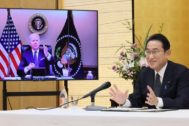
US - Japan
January — April 2022Russian Invasion Accelerates Alliance Review
The US and Japan began the year with a 2+2 meeting, continuing their close coordination on alliance preparedness and regional coalition-building. COVID-19 affected the two allies’ diplomatic schedule, however, as the omicron variant spread quickly in Washington, DC. Once again, an in-person meeting between the secretaries of state and defense and their counterparts, ministers of foreign affairs and defense, had to be moved online. Moreover, resolving the management of COVID by US Forces Japan with Japan’s own protocols was on the agenda. But the US and Japanese governments met another challenge with alacrity: the conclusion of a new Host Nation Support agreement. With an emphasis on alliance resilience, this five-year provision of Japanese support for the US military in Japan handily sidestepped some of the political difficulties that have colored talks in the past.
Much is ahead for Japan this year in updating its strategic planning. Prime Minister Kishida Fumio began a strategic review late last year, and the National Security Council as well as the Ministry of Defense got to work on laying out the aims of a new National Security Strategy, 10-year defense plan, and an accompanying procurement plan. Shaped by the accelerating shift in the military balance in Japan’s vicinity and across the Indo-Pacific, this strategic review is expected to be momentous. The Liberal Democratic Party (LDP) also initiated its own study of Japan’s strategic needs and produced a draft that highlights doubling Japan’s defense spending to match NATO’s target of 2% of GDP.
But President Biden and Prime Minister Kishida have focused on Europe since Russia invaded Ukraine. Both allies have been in sync as the G7 mobilized to impose sanctions against Russia and aid to Ukraine. Framing this crisis as a violation of the postwar international order, Kishida firmly committed Japan to ongoing and comprehensive engagement with not only the US but also European nations. Moreover, Putin’s war against Ukraine has galvanized dialogue between US allies in NATO and in Asia, creating a deepening diplomatic opportunity for Japan to develop European support should a similar crisis erupt in the Indo-Pacific.
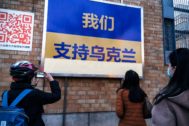
US - China
January — April 2022Putin’s War Further Strains US-China Ties
US-China relations sank to new lows in the opening months of 2022. The year began with a diplomatic boycott of the Beijing Winter Olympics by the US and nine other countries that objected to PRC policies against the Uyghurs in Xinjiang, with another five countries citing the pandemic as the reason for not sending government representatives. A meeting between Chinese leader Xi Jinping and Russian President Vladimir Putin on the eve of the Olympics produced a lengthy joint statement that highlighted the depth and breadth of the China-Russia strategic partnership and raised alarm in Washington as well as in European capitals. US-China ties soured further when the Biden administration shared intelligence with Beijing revealing that Moscow planned to invade Ukraine, but instead of seeking to prevent the war, China gave the information to Russia and refused to act. Once war broke out, US officials warned China repeatedly against providing material support to the Russian economy or military. The Chinese refused to criticize Russia, however, and instead blamed the war on the United States. US and Chinese defense chiefs held their first—and long overdue—phone call. At every opportunity, Chinese officials warned the US to stop supporting Taiwan independence. The US sent several senior delegations to Taiwan, approved the sale of $100 million in equipment and services to support the Patriot Air Defense System, and sailed three warships through the Taiwan Strait.
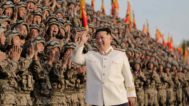
US - Korea
January — April 2022When It Rains, It Pours
Winter/Spring 2022 was a dynamic, clarifying time in US-Korea relations, following repetitious, turbid reporting periods in 2021. South Korea geared up for and held a presidential election, won with a razor-thin margin by conservative Yoon Suk-yeol. His new administration, replacing the progressive government of term-limited Moon Jae-in, promises to place very different accents on the US-South Korea alliance and inter-Korean relations. Washington is relieved to see Yoon assume office, as US senior leadership, policymakers, and alliance managers are comfortable with his foreign and security/defense policy team. Moon and his progressives did plenty to advance the US-South Korea alliance, but their parochial, Peninsula-focused diplomacy was occasionally a source of friction and often seemingly quixotic vis-à-vis North Korea. The Yoon administration is poised to attempt to make the US-South Korea alliance more comprehensive geographically and functionally, although conservative administrations also pose their own idiosyncratic risks to the US-ROK alliance. For its part, North Korea embarked on an unprecedented missile launch spree during the January-April 2022 reporting period, with 13 separate tests or demonstrations (with three more to follow so far in May) of a variety of known and new systems ranging from short-range ballistic missiles (SRBMs) to hypersonic weapons to (supposedly) the previously untested Hwasong-17 intercontinental ballistic missile (ICBM). Three more missile tests followed in May. North Korean supreme leader Kim Jong Un subtly clarified that Pyongyang’s nuclear posture is not totally deterrence-focused, but includes warfighting use, underscoring the likelihood the regime develops tactical nuclear weapons. This would also likely mean a seventh nuclear test. Pyongyang’s provocations and fiery rhetoric were leavened with celebration, as April parades in North Korea marked the 110th Day of the Sun (the birthday of Kim Il Sung) and the 90th anniversary of the foundation of the Korean People’s Army (KPA). These events have a primarily domestic focus, but they also serve as international propaganda, announcing outwardly that North Korea is strong and united. This attempt at perception management will be tested by reality, as an outbreak of omicron variant COVID-19 in early May represents a serious risk for North Korea.
Looming in the background of these events was the Russia-Ukraine war, which has current and future implications for US relations with the Koreas. South Korea slowly but surely supported US-led sanctions on Russia, while North Korea predictably blamed the US for the conflict. Going forward, Washington’s likely increasing pressure on Moscow will be a litmus test for Seoul’s willingness to work comprehensively with its alliance partner on maintaining the international rules-based order; that same pressure campaign will also open up possibilities for greater Pyongyang-Moscow cooperation, notably in sanctions evasion.

US - India
January — April 2022Cold-War Era Differences & Indo-Pacific Synergies
This chapter was made possible through a grant from the Hindu American Foundation.
2022 started with a surging omicron wave, followed by Russia’s invasion of Ukraine and a global food, energy, and supply shortage crisis that impacted a wide range of sectors. The United States and India worked collaboratively and individually to put out these fires over the first four months of 2022, becoming more aware of synergies to build on and differences to address. In the first four months of 2022 bilateral ties witnessed successes in their joint efforts. The Comprehensive Global Strategic Partnership between the US and India was in action through cooperation on vaccines and COVID-19-related supply chain resiliency initiatives. During the reporting period, India removed several agricultural trade barriers, the US unveiled its Indo-Pacific Strategy, foreign and defense ministers held their 2+2 meeting, and there were several phone conversations and in-person meetings between the two administrations discussing Ukraine, Afghanistan, and other Indo-Pacific issues. Historically, foreign affairs has not played a significant role in Indian state-level elections. However, domestic politics in India has a significant impact on foreign relations. On topics of trade, economic cooperation, infrastructure development, and even human rights, developments in state elections can profoundly impact US-India relations.
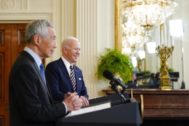
US - Southeast Asia
January — April 2022Regional Powers Cast Long Shadows: ASEAN Grapples with New Dynamics
In the early months of 2022 the Russian invasion of Ukraine had a major, if indirect, impact on Southeast Asia and its relations with the major powers. Rising commodity prices and added disruptions in global supply chains caused by the invasion threatened to erase economic gains following the damage of the COVID-19 pandemic in 2021. ASEAN splintered in its response to the invasion, putting further strain on an institution already buckling under the worsening conflict in Myanmar. A year past the coup in Naypyidaw, the ASEAN Five-Point Consensus Plan has barely moved forward. Beijing’s apparent, if cautious, support for Moscow following the invasion added new tensions in a region already on edge with growing Chinese assertiveness and a reinvigoration of US alliances. Chairing the G20 for the first time this year, Indonesia faces demands from the West to expel Russia from the group, a proposal that China vigorously opposes. The Ukraine conflict exacerbates ASEAN’s fear of being caught between the West and China, but adds a new concern that the Asia-Pacific region might further nuclearize with the threat of a nuclear standoff between Russia and NATO.
US relations with Southeast Asia began the year on a positive note following the stream of visits from high-level officials from the Biden administration in the second half of 2021. By late March, however, the US-ASEAN Special Summit had been postponed, in part because of ASEAN uneasiness over Washington’s intense focus on Ukraine. The campaign for Philippine elections was launched officially in February, and Ferdinand “Bong Bong” Marcos, son of Ferdinand and Imelda Marcos, maintained a steady lead and realized a substantial win in the presidential race on May 9, with Sara Duterte as his vice president. Politics in both Malaysia and Thailand were less straightforward, but by the end of April both countries appeared to be heading for early elections. A political transition of a different sort took place in Singapore, when President Lee Hsien-Loong named Finance Minister Edward Wong as the new leader of the People’s Action Party, effectively making Wong his political heir and the next prime minister.
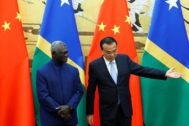
China - Southeast Asia
January — April 2022Diminished Priority As Ukraine Distracts America
Southeast Asia stopped being China’s high priority as Beijing viewed US initiatives to compete with China in the region as flagging amid preoccupation with the war in Ukraine. Chinese diplomacy added to the reasons Southeast Asian governments generally eschewed support for US-backed sanctions against Russia and carefully avoided major controversy in UN votes on the Russia-Ukraine conflict. A Chinese-Solomon Islands security deal resulted in more US and allied attention to the Pacific Islands than ever before, surpassing rare past instances of concern over interventions by the Soviet Union, Libya’s Muammar Gaddafi, and others in an area usually considered of low strategic importance.
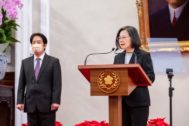
China - Taiwan
January — April 2022Taiwan and China Seek Lessons from Ukraine as Taiwan’s International Position Strengthens
The year 2022 in cross-Strait relations began quite predictably. Both sides repeated their calls for reconciliation, but in completely incompatible terms. Chinese leaders signaled somewhat obscurely that a new tougher Taiwan policy might be announced at the Chinese Communist Party’s Twentieth Party Congress scheduled for this fall, which could further increase cross-Strait tensions. This predictability was upended by Russia’s invasion of Ukraine. China insisted that this international confrontation had no lessons for the purely domestic matter of reunifying Taiwan. Nonetheless, China, Taiwan, and the US have all begun seeking military lessons from the Ukraine War. Taiwan and the US have intensified their discussion as to whether and how aggressively Taiwan should adopt an asymmetric defense relying on the small portable weapons—Javelins, Stingers, and others—that have thus far proven so successful in Ukraine. Diplomatically, the Biden administration has struggled to reassure China that it continues to honor the One-China Policy introduced in the Shanghai Communique 50 years ago even as it signals renewed support for Taiwan’s security. China’s support for Russia has antagonized Europe, Taiwan continues to enjoy success in international diplomacy, and Pacific allies Japan and Australia have become more explicit in their support for cross-Strait stability.
In Taiwan domestic politics, President Tsai Ing-wen is in the strongest position of any Taiwan president midway through a second term after leading her Democratic Progressive Party (DPP) to victories in a local by-election and a local recall effort, both called by the opposition Nationalist Party (Kuomintang or KMT). If the DPP does well in regularly scheduled local elections this fall, that success may set the stage for a confrontation with Xi Jinping as he begins his history-making third term as general secretary of the modern Communist Party.
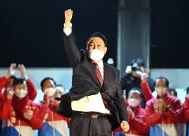
North Korea - South Korea
January — April 2022From Moon to Yoon: End of an Era
The first months of 2022 were also the last of Moon Jae-in’s presidency. Inter-Korean relations have been frozen for the past three years, and 2022 saw no change there. In April Moon exchanged letters with Kim Jong Un, whose warm tenor belied the reality on the ground. The North was already testing more and better missiles faster than ever, and tearing down ROK-built facilities at the shuttered Mount Kumgang resort. Days after his billets-doux with Moon, speaking at a military parade, Kim threatened ominously to widen the contexts in which his ever-improving nuclear arsenal might be used. All these challenges confront a new leader in Seoul. Unlike Moon, the conservative Yoon Suk-yeol is new to politics, but not minded to indulge Kim. His ministerial and other appointees, who have now taken over, are already striking a firmer note—while also stressing their pragmatism and openness to dialogue. Very recently a fresh threat—or perhaps an opportunity—has arisen, with the North finally admitting an outbreak of COVID-19. Yoon promptly offered vaccine aid. It remains to be seen if Kim will accept this, how he will handle the omicron outbreak, whether he will proceed with a widely expected nuclear test, and how Yoon and Biden will handle an ever more complex crisis.
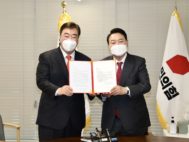
China - Korea
January — April 2022Beijing Olympic Tensions, North Korea’s Testing Spree, and South Korea’s New Conservative Leadership
The first four months of 2022 marked a turn toward difficult terrain in the China-South Korea relationship, including the challenge of managing conflicting expressions of patriotism during the Beijing Olympics. The Olympics opening ceremonies were attended by National Assembly Speaker Park Byung-seug, South Korea’s second-highest-ranking official by protocol, despite the US imposition of a “diplomatic boycott.” North Korea’s dozen missile tests since January 2022 included a “new” ICBM launch in March ahead of the 110thanniversary of Kim Il Sung’s birth and Yoon Suk-yeol’s presidential inauguration. The latest tests drove China-South Korea dialogue, new US sanctions, and reassertions from Beijing that US actions remain the decisive factor in resolving the peninsula problem. Beijing’s hosting of the Olympics and Pyongyang’s commemorations of Kim anniversaries presented opportunities for jointly reaffirming China-North Korea friendship. Despite signs of rebounding economic activity after the resumption of cross-border freight train operations in January, China’s COVID-19 lockdowns remain a source of uncertainty.
South Korea’s election of pro-US opposition candidate Yoon Suk-yeol generated a mixture of anxiety and veiled warnings from Chinese commentators. Chinese President Xi Jinping’s call to Yoon two weeks following the election was hailed as an unprecedented gesture of respect from a Chinese leader to an incoming South Korean president. But Yoon’s first congratulatory calls after his electoral victory were from Quad members as well as the United Kingdom, reflecting a distinct South Korean tilt toward the United States amid the China-US strategic rivalry. Yoon’s campaign platform posited a positive-sum relationship between his pledges to restore a “comprehensive strategic alliance” with the United States and to establish relations with China built on “mutual respect.” But it remains to be seen how Beijing will respond to the Yoon administration’s shift toward an unambiguous alignment with the US.
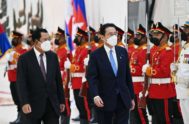
Japan - China
January — April 2022The Cold Peace Continues
Intermittent declarations of intent to celebrate the 50th anniversary of the normalization of relations notwithstanding, China-Japan tensions continued unabated. No high-level meetings were held between the two, but rather between each and its respective partners: China with Russia, and Japan with members of the Quadrilateral Security Dialogue as well as separately, with Australia, New Zealand, and the United States. All of the latter had apprehension over Chinese expansionism as their focus. Both the Chinese and Japanese economies sputtered in response to COVID lockdowns and the rising cost of energy but trade relations were robust and expected to increase as the number of new COVID cases declines. However, each side continued to develop its military capabilities, with China continuing to voice irritation with Japan for its obvious, though largely tacit, support for Taiwan’s autonomy.

Japan - Korea
January — April 2022South Korea’s New President and a Seoul-Tokyo Reset?
What impact will the victory of Yoon Seok-yul in South Korea’s presidential elections have on Seoul-Tokyo relations? During his campaign, Yoon repeatedly emphasized the “strategic importance of normalizing” and improving relations with Japan. It was an open secret that Yoon was Tokyo’s preferred candidate. With his May inauguration, opportunities for a diplomatic reset are on the horizon. Unsurprisingly, however, Japan is responding cautiously to overtures. Prime Minister Kishida Fumio sent his foreign minister to Yoon’s inauguration on May 10, instead of attending himself, especially as he looks to the Upper House election in July. Seoul and Tokyo will probably schedule a long-awaited summit meeting when they begin to move toward addressing the issue of wartime forced laborers. That issue has strained bilateral ties since the South Korean Supreme Court ruled in favor of Korean wartime forced laborers in separate decisions in late 2018, leading to drawn-out legal processes against the court orders. Yoon’s election win has not changed the Japanese position, which maintains that the reparations issue was fully settled by the 1965 normalization treaty.
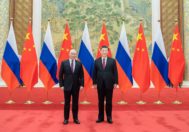
China - Russia
January — April 2022Ukraine Conflict Déjà Vu and China’s Principled Neutrality
Perhaps more than any month in history, February 2022 will come to symbolize how the states of peace and war can flip-flop in a few days, with dire consequences for the global order. On Feb. 21, just one day after the closing ceremony of the Beijing Winter Olympics, Russia announced its official recognition of the independence of the two breakaway regions (Donetsk and Luhansk) of Ukraine. Three days later, Russia launched its “special military operation” in Ukraine to end the “total dominance” and “reckless expansion” of the United States on the world stage (in the words of Russian Foreign Minister Sergei Lavrov). As the West imposed sanctions on Russia and rushed arms into Ukraine, China carefully navigated between the warring parties with its independent posture of impartiality.
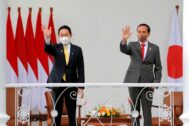
Japan - Southeast Asia
May 2021 — April 2022Normative Challenges in Southeast Asia and the Indo-Pacific
Despite the lingering effects of COVID-19 and another change in leadership in Tokyo, Japan and Southeast Asian states continued to strengthen their functional cooperation. To counter the negative impact of the pandemic, Japan continued to donate vaccines to ASEAN member states. Economically Japan and ASEAN, together with other regional states entered into the Regional Comprehensive Economic Partnership (RCEP) in January 2022. Militarily, Japan conducted the Indo-Pacific Deployment 2021 (IPD21) from August to November 2021, which has become a regularized defense deployment. Further, Japan had the very first bilateral Foreign and Defense Ministerial Meeting with the Philippines in April 2022. Diplomatically, Japan and ASEAN closely consulted with each other to enhance cooperation for the realization of Japan’s “Free and Open Indo-Pacific” (FOIP) vision and ASEAN’s “ASEAN Outlook on the Indo-Pacific” (AOIP). However, Japan-Southeast Asia relations now face new normative challenges regarding how their approach to liberal values, such as rule of law and democracy/human rights in the Indo-Pacific region because of the prolonged Myanmar political crisis and the 2022 Russo-Ukraine war.